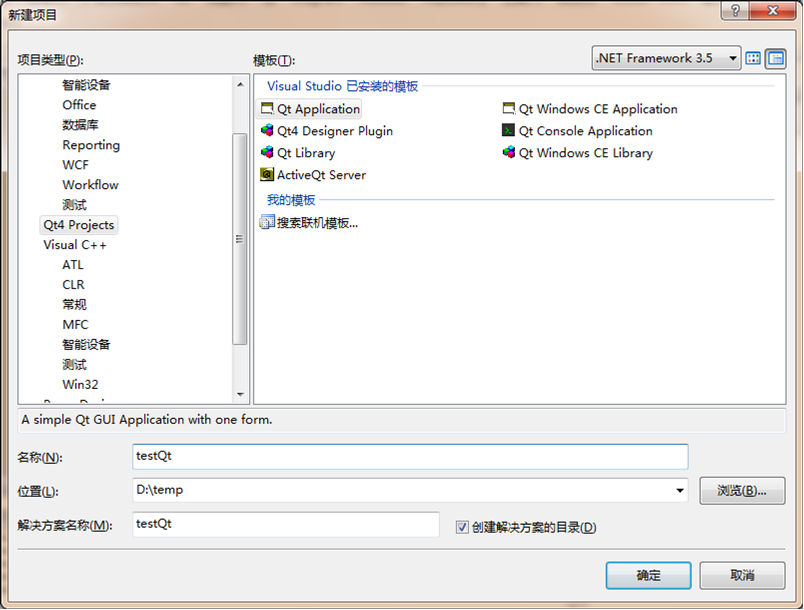
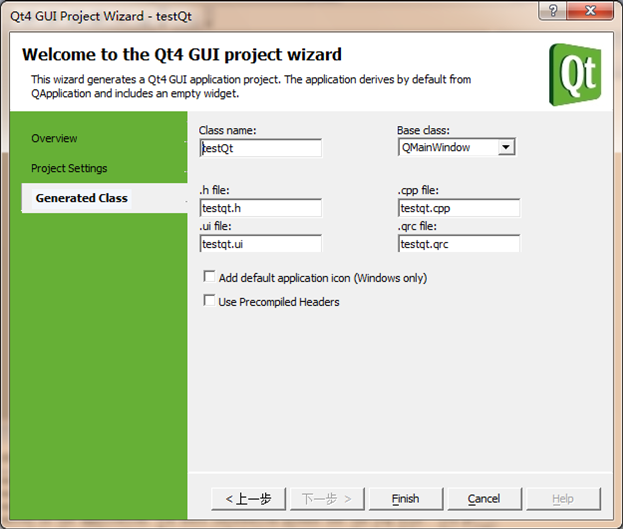
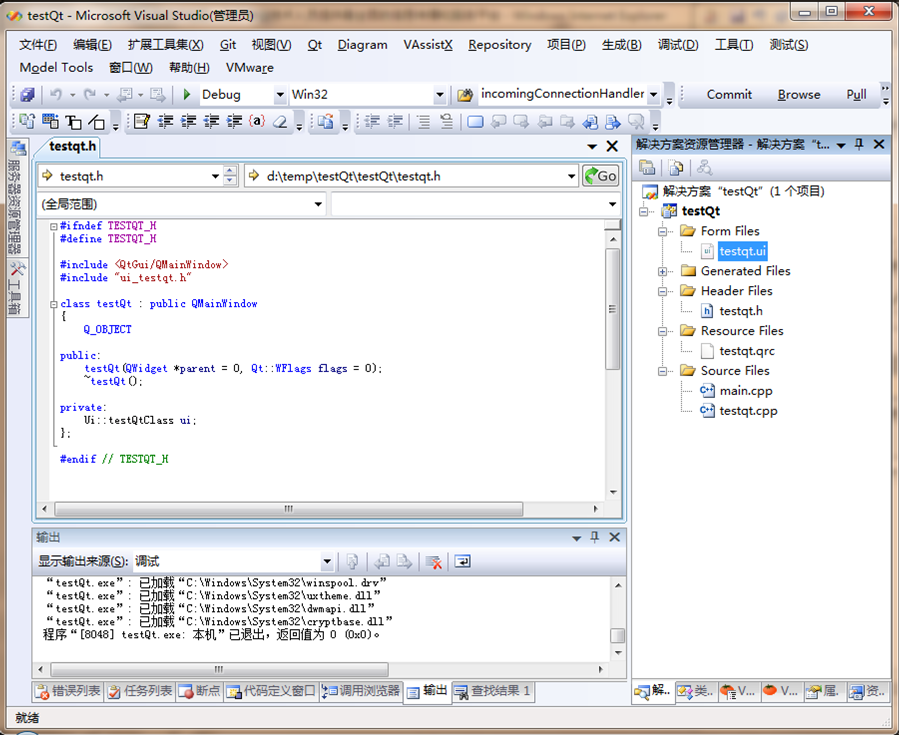
双击testqt.ui
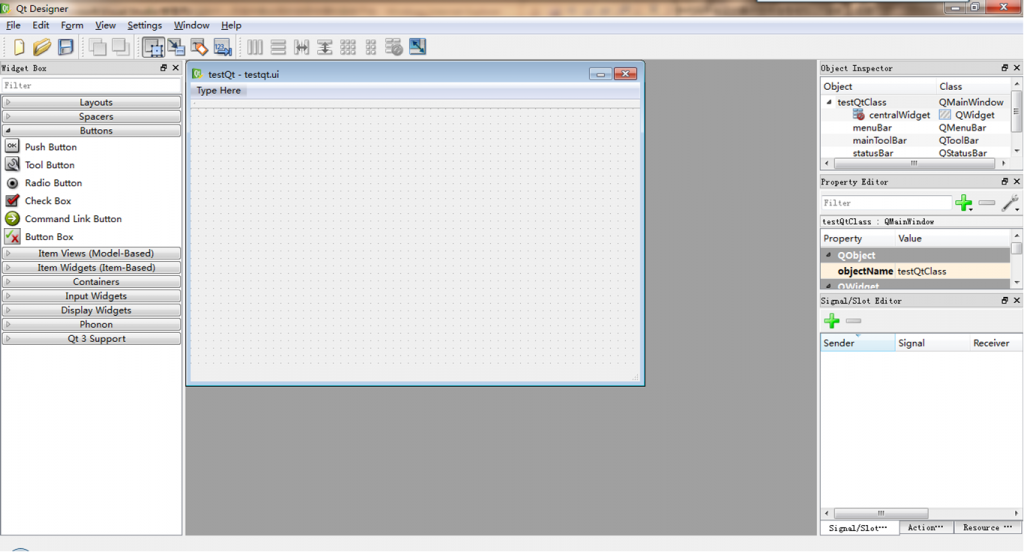
托一个push button到窗体中,双击,可以输入字符
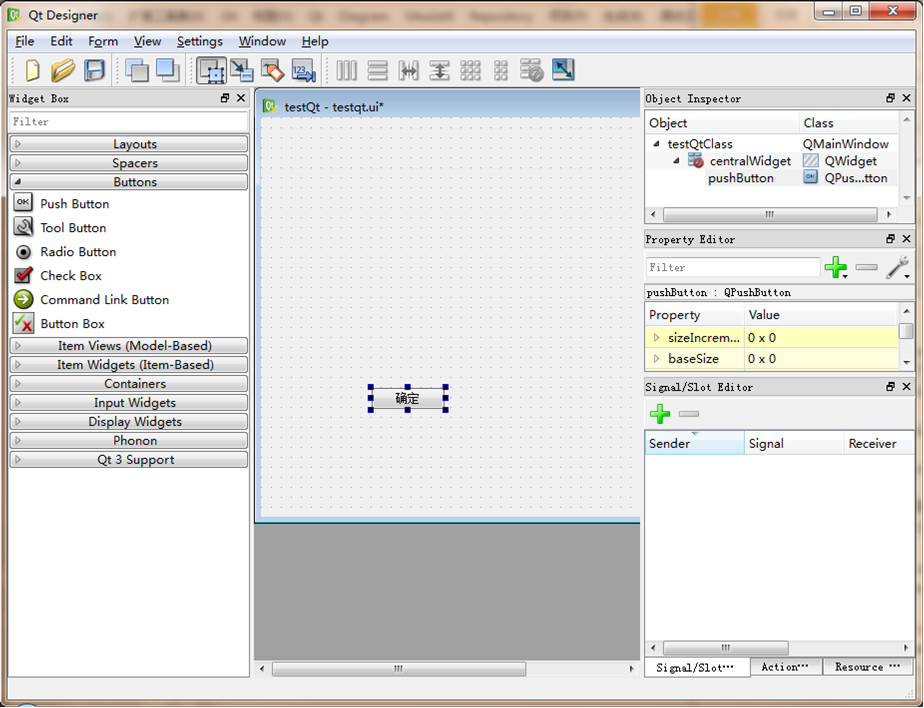
按F4或 menu->edit->edit signals/slots 定义SLOT
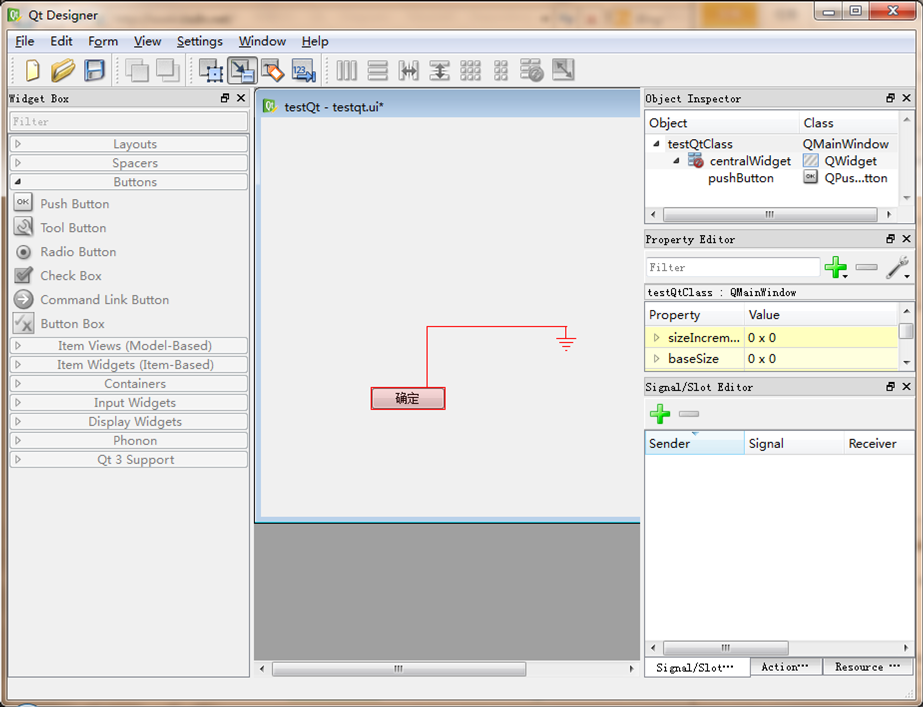
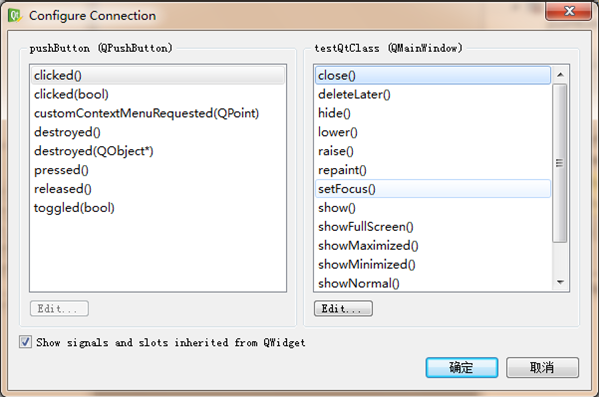
选择已定义好的SLOT,点确定就可以进行关联了。
定义自定义SLOT:
点上面对话框中的EDIT按钮,弹出:
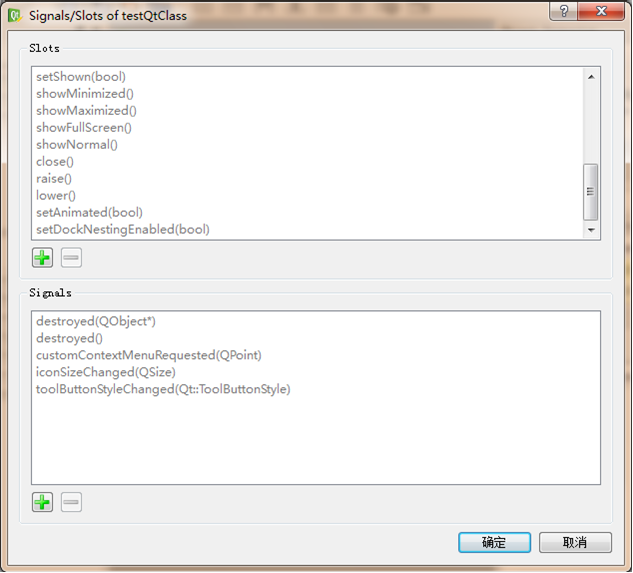
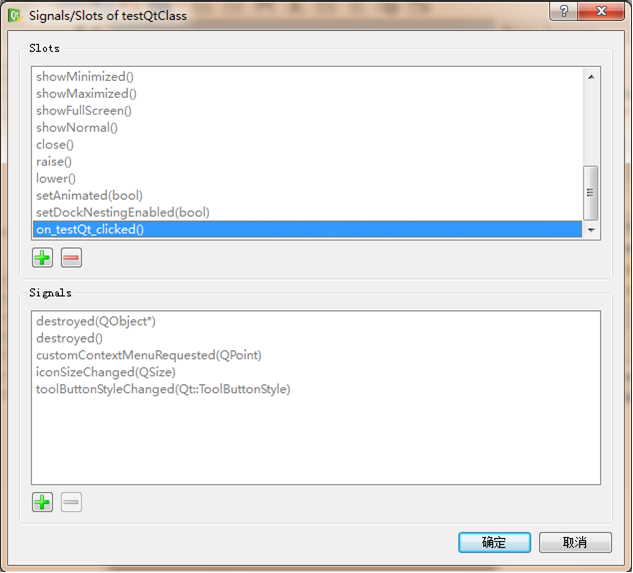
注意这里自定义的slot必须是
on_<object name>_<signal name>(<signal parameters>)
格式。

然后再在testqt.h头文件中加入下面声明:
public slots:
void on_testQt_clicked ();
在testqt.cpp中加入函数实现:
void testQt::on_testQt_clicked ()
{
QMessageBox msg;
msg.setText("ok");
msg.exec(); //模式对话框,show显示非模式对话框
}
编译后,你可以在ui_testqt.h头文件中看到
QObject::connect(pushButton,SIGNAL(clicked()),testQtClass,SLOT(on_testQt_clicked ()));
QMetaObject::connectSlotsByName(testQtClass);
例如UI里新建了一个openButton,在.h文件里声明void on_openButton_clicked()函数并在cpp文件里添加这个函数的定义后,seupUi()就可以自动将openButton的clicked信号与我们定义的slot函数联系在一起了!
我们的.ui文件自动生成的ui_mainwindow.h文件里的代码总会有一句:
QMetaObject::connectSlotsByName(MainWindowClass);
它就是用来自动识别我们所有界面控件的信号槽的,但必须是以下面的格式。
void QMetaObject::connectSlotsByName ( QObject * object ) [static]
Searches recursively for all child objects of the given object, and connects matching signals from them to slots of object that follow the following form:
public slots:
void on_<object name>_<signal name>(<signal parameters>);
Let's assume our object has a child object of type QPushButton with the object name button1. The slot to catch the button's clicked() signal would be:
void on_button1_clicked();
http://blog.csdn.net/kl222/article/details/7739141